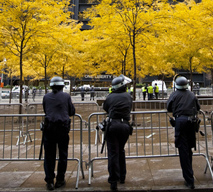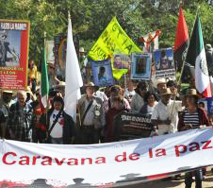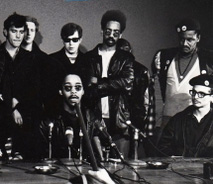
Wall Street and London: Evictions Are a Sign of Occupy Movement’s Success
A report from the occupation at St Paul’s Cathedral in London suggests that the wave of evictions are a sign of the Occupy movement's success .

A report from the occupation at St Paul’s Cathedral in London suggests that the wave of evictions are a sign of the Occupy movement's success .

A pressing concern of Mexican communities today is how to organize against the escalation of violence triggered by the government's militarized war on drugs, and how to counteract the temptation of easy money and other perks offered by the drug trade, especially to young men.

Source: Democracy Now!
The Occupy Wall Street movement marked its two-month anniversary on Thursday with a series of actions in New York City and nationwide. Here in New York City, protesters began the day with an action at the New York Stock Exchange, causing major disruptions and leading to a number of arrests.
Protester 1: “I’m out here today because I’m vastly underemployed and over-educated, and I believe that the 1 percent needs to do their fair share.”
Protester 2: “You know, they’ve got so many cops here, so many people in riot gear. This is a peaceful, nonviolent act from people as young as babies to grannies that are just participating in this. And it’s excessive, and Mayor Bloomberg should be ashamed of himself, as a mayor and also as a member of the 1 percent.”

Source: Waging Nonviolence
Liberty Plaza (or Park or Square) looks an awful lot like Zuccotti Park again—aside from the damaged flower beds and a broken plastic peace sign lying in the gutter. At 1 in the morning, hundreds of police in riot gear stormed the plaza, shining floodlights and tearing down tents. Sanitation workers loaded occupiers’ belongings into garbage trucks, including the books of the occupation’s library. LRAD sound cannons were on the scene, and as many as five police helicopters hovered high overhead, where airspace was closed to media aircraft. On the ground, police cornered reporters out of view from the plaza during the eviction of the protesters, some of whom locked arms around the kitchen area and nonviolently resisted removal. They faced pepper spray and batons for doing so.

A hidden history of the 1960s and what lessons it offers movements in these current radical times.

Source: The Nation
They came from all over, tens of thousands of demonstrators from around the world, protesting the economic and moral pitfalls of globalization. Our mission as members of the Seattle Police Department? To safeguard people and property—in that order. Things went well the first day. We were praised for our friendliness and restraint—though some politicians were apoplectic at our refusal to make mass arrests for the actions of a few.
Then came day two. Early in the morning, large contingents of demonstrators began to converge at a key downtown intersection. They sat down and refused to budge. Their numbers grew. A labor march would soon add additional thousands to the mix.
Copyright Toward Freedom 2019